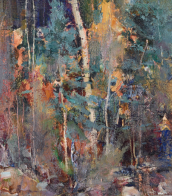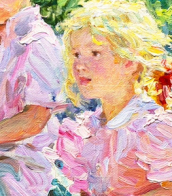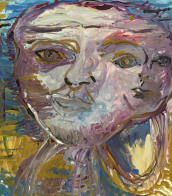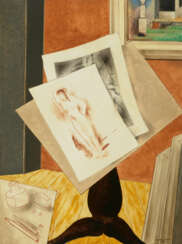крамер











Pieter Cramer was a Dutch merchant and traveler and entomologist.
A cloth and wool merchant, Cramer traveled the world and amassed an extensive collection of sea shells, fossils, and various insects. Many colorful butterflies and moths were collected in Surinam, Ceylon, Sierra Leone, and the Dutch East Indies - countries with which Holland had colonial or trade ties. Kramer hired the artist Gerrit Wartenaar Lambertz to sketch butterfly specimens collected not only by him but also by other Dutch collectors. The illustrations were very numerous, and Kramer, together with the naturalist and entomologist Caspar Stoll, decided to publish them.
The resulting encyclopedia, De Uitlandsche Kapellen, is one of the key works in the history of entomology. The scales from Asia, Africa and the Americas are depicted in life-size and hand-colored engravings. It was the first book on exotic butterflies to use the new system of animal classification developed by Carl Linnaeus (1707-1778). Over 1,658 species of butterflies were described and illustrated on 400 plates. Many species were depicted and named for the first time.






Peter Kramer the Younger was a German painter who painted portraits of Bavarian peasants.


Konrad Cramer was a German-born American painter. He was trained at the Academy of Fine Arts in Karlsruhe, and he emigrated to the United States in 1911. A naturalized U.S. citizen, he is "often credited as being an important link between German and American modernism in art."


Konrad Cramer was a German-born American painter. He was trained at the Academy of Fine Arts in Karlsruhe, and he emigrated to the United States in 1911. A naturalized U.S. citizen, he is "often credited as being an important link between German and American modernism in art."


Helene Cramer is a German floral artist, landscape and portrait painter. She studied painting privately in Hamburg, The Hague and Antwerp.
Helen Kramer is best known for her colourful floral still lifes. Her work was regularly shown at major German exhibitions. And Helen herself was a member of the Allgemeine Deutsche Kunstgenossenschaft, the Artists' Association of Northwest Germany, the Berlin Artists' Association and the Vienna Association of Writers and Artists.


Pieter Cramer was a Dutch merchant and traveler and entomologist.
A cloth and wool merchant, Cramer traveled the world and amassed an extensive collection of sea shells, fossils, and various insects. Many colorful butterflies and moths were collected in Surinam, Ceylon, Sierra Leone, and the Dutch East Indies - countries with which Holland had colonial or trade ties. Kramer hired the artist Gerrit Wartenaar Lambertz to sketch butterfly specimens collected not only by him but also by other Dutch collectors. The illustrations were very numerous, and Kramer, together with the naturalist and entomologist Caspar Stoll, decided to publish them.
The resulting encyclopedia, De Uitlandsche Kapellen, is one of the key works in the history of entomology. The scales from Asia, Africa and the Americas are depicted in life-size and hand-colored engravings. It was the first book on exotic butterflies to use the new system of animal classification developed by Carl Linnaeus (1707-1778). Over 1,658 species of butterflies were described and illustrated on 400 plates. Many species were depicted and named for the first time.

Caspar Stoll was a Dutch naturalist and entomologist of German descent.
Caspar Stoll became known for his work on the historical illustrated encyclopedia De Uitlandsche Kapellen, a butterfly encyclopedia started by merchant and entomologist Peter Cramer. Butterflies and moths were collected by him on his travels in Surinam, Ceylon, Sierra Leone, and the Dutch East Indies, countries with which Holland had colonial or trade ties. Stoll continued and completed the publication of volumes of this work after Kramer's death. He also published several of his own works on other groups of insects.


Pieter Cramer was a Dutch merchant and traveler and entomologist.
A cloth and wool merchant, Cramer traveled the world and amassed an extensive collection of sea shells, fossils, and various insects. Many colorful butterflies and moths were collected in Surinam, Ceylon, Sierra Leone, and the Dutch East Indies - countries with which Holland had colonial or trade ties. Kramer hired the artist Gerrit Wartenaar Lambertz to sketch butterfly specimens collected not only by him but also by other Dutch collectors. The illustrations were very numerous, and Kramer, together with the naturalist and entomologist Caspar Stoll, decided to publish them.
The resulting encyclopedia, De Uitlandsche Kapellen, is one of the key works in the history of entomology. The scales from Asia, Africa and the Americas are depicted in life-size and hand-colored engravings. It was the first book on exotic butterflies to use the new system of animal classification developed by Carl Linnaeus (1707-1778). Over 1,658 species of butterflies were described and illustrated on 400 plates. Many species were depicted and named for the first time.

Caspar Stoll was a Dutch naturalist and entomologist of German descent.
Caspar Stoll became known for his work on the historical illustrated encyclopedia De Uitlandsche Kapellen, a butterfly encyclopedia started by merchant and entomologist Peter Cramer. Butterflies and moths were collected by him on his travels in Surinam, Ceylon, Sierra Leone, and the Dutch East Indies, countries with which Holland had colonial or trade ties. Stoll continued and completed the publication of volumes of this work after Kramer's death. He also published several of his own works on other groups of insects.


Konrad Cramer was a German-born American painter. He was trained at the Academy of Fine Arts in Karlsruhe, and he emigrated to the United States in 1911. A naturalized U.S. citizen, he is "often credited as being an important link between German and American modernism in art."


Helene Cramer is a German floral artist, landscape and portrait painter. She studied painting privately in Hamburg, The Hague and Antwerp.
Helen Kramer is best known for her colourful floral still lifes. Her work was regularly shown at major German exhibitions. And Helen herself was a member of the Allgemeine Deutsche Kunstgenossenschaft, the Artists' Association of Northwest Germany, the Berlin Artists' Association and the Vienna Association of Writers and Artists.


Hendrik Anthony Kramers was a Dutch theoretical physicist and a member of the Royal Netherlands Academy of Sciences.
Kramers studied mathematics and physics at Leiden University before being recruited in Copenhagen by future Nobel Prize-winning physicist Niels Bohr (1885-1962). He tried to understand how electromagnetic waves interact with matter and made important contributions to quantum mechanics and statistical physics. Under Bohr's supervision, Kramers prepared his dissertation.
In 1926, Kramers left Denmark and became a professor of theoretical physics at Utrecht University, and from 1931 he also worked at Delft University of Technology. After the end of World War II, the scientist was active in Europe and taught in the United States.
Kramers' scientific works are devoted to atomic physics, quantum mechanics, solid-state physics, low-temperature physics, physical optics, and the kinetic theory of gases. Together with Ralph de Laer Kronig, he derived important equations relating absorption to the dispersion of light. Kramers' research on X-rays led to the development of equations for determining the efficiency and intensity of X-ray production.
In the 1930s, Kramers worked as an editor of a literary magazine, wrote and translated poetry into Dutch, and was an expert on the works of Shakespeare.





































